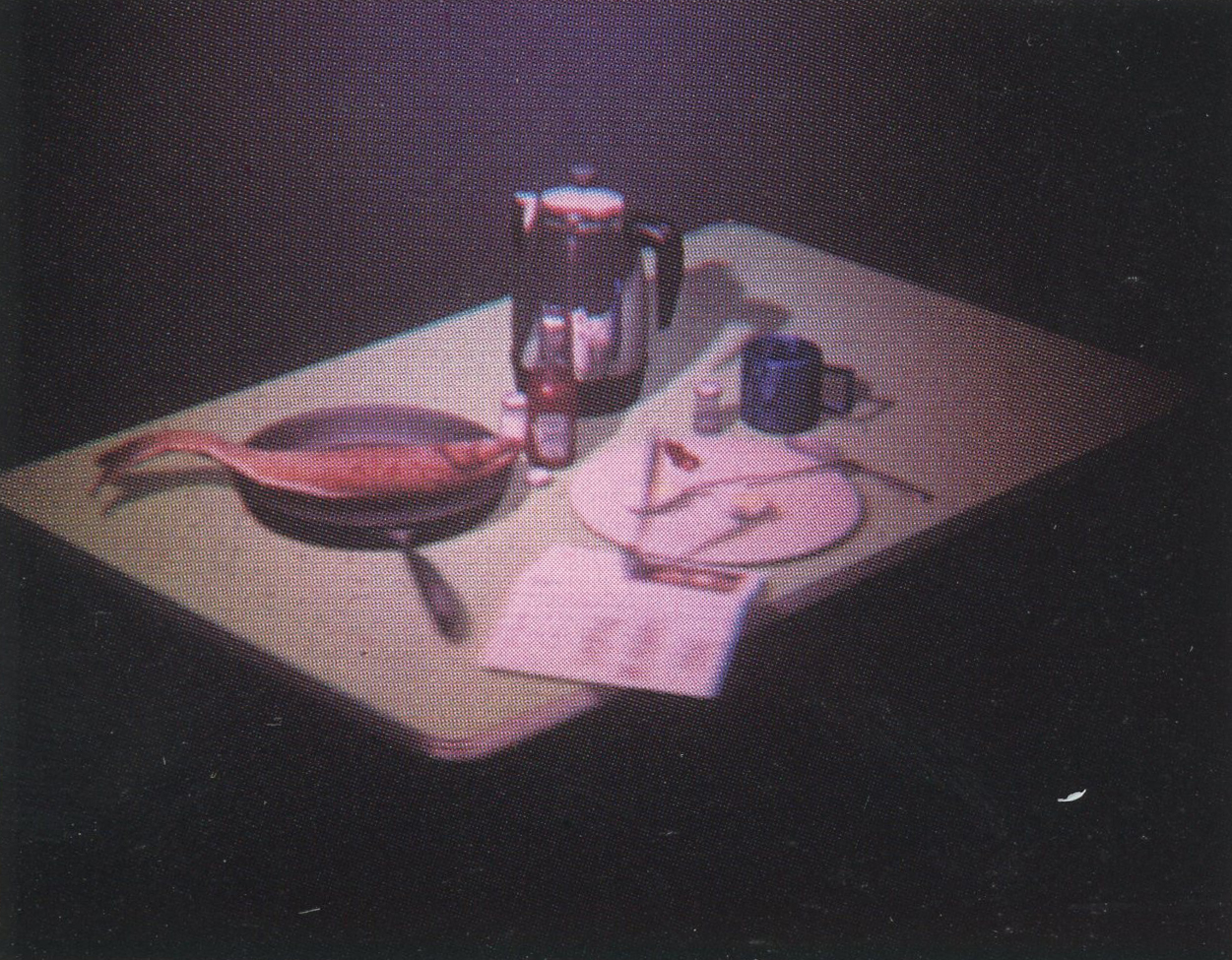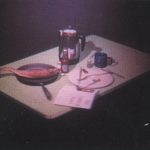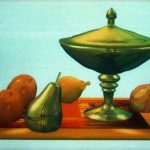Michael Klug, John Underkoffler: Breakfast Attempt
Artist(s):
Title:
- Breakfast Attempt
Exhibition:
- SIGGRAPH 1991: Art and Design Show
-
More artworks from SIGGRAPH 1991:


Creation Year:
- 1990
Medium:
- Reflection holographic stereogram
Size:
- 11.5 x 14.5
Category:
Technical Information:
Hardware: Symbolics LISP Machine, HP/SGI/DEC workstations, in-house custom printing hardware.
Software: S-Geometry for modeling, Rendermatic in-house for rendering.
Other Information:
This work represents the state of the art in standard polygonal rendering techniques and full-color computer graphics reflection stereogram technology as of the date of its completion. Characteristics such as realistic reflection mapping, texture mapping, transparency and even shadows combine to form a very realistic image. The creation of this piece entailed a two-step process. In the first, conventional modeling and rendering software was used to construct the depicted scene, with the systems modified to produce renderings distorted in accordance with the eventual requirements of the subsequent optical holography step. The computer was then instructed to generate three hundred views of the scene, which were rendered from slightly-differing viewpoints arrayed evenly along a line and representing the eventual location of the viewer’s eyes. In the second half of the process, color-separated film footage of the views was laserprojected, frame by frame, in a holographic setup to produce three hundred separate, contiguous holograms on a single holographic plate; this was repeated for each of the three color-separated channels. Finally, these three “master” plates were carefully registered and optically combined into a single “transfer” hologram. This hologram reconstructs each of the original three hundred views (with the three color channels now overlapping) in distinct but abutting regions of space, so that a viewer’s eyes always intercept rendered views of the scene that are appropriate to their location. Included in the work are three distinct images, comprising an extreme left, a middle, and an extreme right view of the stereogram subject matter. The holographic stereogram itself exhibits striking, stable colors and an uncanny tangibility that result from work in color-control technology and non-distortive holographic geometries undertaken at the MIT Spatial Imaging Group; these techniques are as yet unduplicated and unavailable, to the best of our knowledge, anywhere else in the world.






